The content of the article
Oh, and our gardeners love all sorts of wonders! They breathe especially unevenly to tropical plants. And no wonder, their flowers are original, bright, foliage also often attracts attention. But not everyone will dance with a tambourine around an exotic pet.
And then it begins ... Why doesn’t the orchid blossom, and only leaves grow? How to make an orchid produce a flower stalk? What to do if the orchid does not bloom? And a bunch of similar questions.
You can answer everything: proper care is the key to good luck. But let's look at all the reasons in detail.
Water, water, water all around ...
Improper watering is the main reason that the orchid does not bloom, and only leaves grow. Few, buying a pretty lady in a store, bother to read the care information. The tropics means damp. And every day a large amount of liquid is swelled into the pot. It turns out 2 scenarios:
- There is good drainage in the pot, and excess liquid safely drains through the holes in the pan. At the same time, she does not have time to wet the soil. It turns out that there was no watering, as such. It’s good if the plant is healthy. It can still exist in tantalum torment for a long time. But there will be no flowering.
- The drainage holes are clogged with soil and roots. It turns out a swamp. Here in it for the time being the unfortunate orchid will survive. Then the roots will decay safely and the plant will die.
How to water an orchid so that it blooms? Only by immersion. It’s useless to do it from above. The pot is placed in a large container, water is poured to its middle. Forget for 10-12 minutes. Then they add liquid almost to the very top. And again they wait about 11-13 minutes. After the procedure, the container with the orchid is placed on a stand so that the glass is excess water.
Now the plant can be returned to its usual habitat and wait for flowering. This irrigation procedure saturates the substrate well enough. Moisture is enough for about 10-14 days. Then they repeat everything.
Tip. Focus on the color of the roots. A light green hue indicates the abundance of fluid. Silver-white signals - it's time to drink the beauty.
The light of your window ...
Where to put an orchid so that it blooms? Of course, on the windowsill! It is there that she will have enough lighting for normal growth and development. Indeed, in natural conditions, the Tropicans grow on the bark of trees to rise higher to the sun.
Therefore, the room should be light. There is no such window sill? Obtain a special lamp immediately for additional illumination. Otherwise, you will never see flowers.
The owners of the southern and western windowsills have a different problem. The harsh Russian summer often surprises. And direct sunlight is great for burning leaf plates. But do not drag the pot with the orchid to another window. It is enough to make a scattering screen. It can be white paper, thick tulle or even a flap of light fabric. There will be plenty of light, but it will not burn tender leaves. Flowering will come fast enough, and will be long.
Earth in the porthole ...
Improper soil composition will not help your orchid release a flower stalk. It even hurts.Some beginners are very afraid to transplant the plant after purchase, especially if it blooms. But the composition of the transport soil is designed for the normal existence of the Tropicana for about 3 months. In addition, it is crammed with chemicals and stimulants.
Immediately after flowering, the orchid needs to be transplanted into a suitable substrate. It can be purchased at the store, or you can assemble it yourself:
- wood bark chips
- small pieces of coal
- good fat humus
- horse peat
- coarse sand
All this is taken in equal amounts, then mixed well. It is this composition that is ideal for planting orchids at home. After the transplant, no more than six months will pass, and it will bloom again. Just a plant will need some time to acclimatize and grow new roots.
Tip. Use clear pots with plenty of drainage holes. An orchid blooms only when its root system receives enough light and air. And it will be easier for you to control the condition of the roots.
Oh, my box is full!
Regular top dressing very actively stimulate the maturation of peduncles. And most gardeners simply ignore this rule. They believe that the orchid is enough for those trace elements that are in the ground. This is a great fallacy.
In natural conditions, the plant eats those minerals that settle on its aerial roots in the form of dust. Plus a very fat, but loose perennial humus in the cracks of the bark. Are you able to provide her with such conditions? Not. So stomp to the store for top dressing.
Always carefully read the contents and manufacturer's recommendations on the packaging. Do not fall for the seller’s words that this particular fertilizer is universal and suitable for all types of indoor plants. Your selection criteria should be:
- The words "for orchids" on a bag or box
- Mandatory presence of phosphorus, potassium in the composition.
- Minimum nitrogen.
- Competent instructions for use with the exact dosage and frequency of treatments.
- Precautions and hazard class.
After the purchase, go home, re-read it again. And you begin to slowly feed your orchid. How often to fertilize? About once every 9-10 days, but the dose is halved. Because an overabundance of trace elements is as destructive as their lack.
Tip. Try using a tablet form of fertilizer. Then there will be no need for accurate dose measurement, and the orchid itself will take as much nutrition as it needs now.
We don’t have a problem ...
Some gardeners buy young orchids, bring them home. They create ideal conditions and expect a miracle. But it does not happen. Why? Yes, because the plants do not bloom, until they reach a certain age.
When do orchids start blooming? It all depends on the variety. Before purchasing, do not be lazy to find out all the features of the plant. And especially his age at the time of purchase. A normal adult well-developed orchid is ready to please the hosts with flowers in the presence of at least 5 leaves.
In general, it is generally accepted that peduncles up to 5 leaves must be removed. They greatly weaken the young seedling. But then, when the orchid enters full force and adulthood, it will bloom regularly and for a long time.
By the way, they say that for each new leaf the plant should release one new peduncle. Nonsense. It owes nothing to anyone. This is the owners must competently care for the orchid and create all conditions for good growth and development. Then she will deign to bestow them with her magnificent flowers.
The squadron of my crazy thoughts ...
Indeed, if an orchid refuses to bloom for a very long time, then the most crazy thoughts creep in.And the majority leads to the fact that the owner intends to fight with the plant ... to fight! That's just the most dishonest way. What "couch warriors" do not advise. There are cloves of garlic stuffed into a pot. And pieces of ice laid out on the surface of the soil. And even the night content at a temperature of + 10-12 ° C.
Sorry, but not every plant can withstand such torment. There is no time for flowers; you yourself wouldn’t throw away the last leaves.
Instead of war and persecution (you can’t call such advice otherwise), it’s better to make a delicate shake for the Tropican. But not literally shake the pot, but figuratively. That is, to create such conditions that the orchid was simply forced to bloom. Just be careful not to overdo it. Otherwise, instead of admiring the charming butterflies of bright colors, you will have to put the beauty in the infirmary and treat the immoderate consequences of the experiment for a long time.
How to arrange the right orchid stress so that it blooms? This should be done correctly:
- Water the orchid according to the principle - the soil has dried out, plus another 5 days.
- At a height of approximately 37-39 cm, hang a phytolamp.
- Stop top dressing, spraying, and other care.
- Once a week, put on a leaflet a weak solution of any biostimulant (zircon, epin, aloe juice).
If at least the slightest signs of oppression appear, or the appearance of the aerial part shows dissatisfaction with the new regime, then immediately stop the execution. It is possible that your orchid is not yet ready for such stress. Try to repeat the procedure after 3 months. Naturally, care should remain at a high level. During this time, the plant will grow stronger and gain strength. And in the end, he will show you and the flower stalk.
Why doesn’t the orchid blossom, but only leaves grow? Now you yourself will advise anyone on this issue. Just do not forget that it is not enough just to be in the know. It is also necessary to correctly apply knowledge in practice. Then a lovely tropical beauty will delight you with her fabulous flower butterflies for a long time.
Video: how to achieve orchid bloom


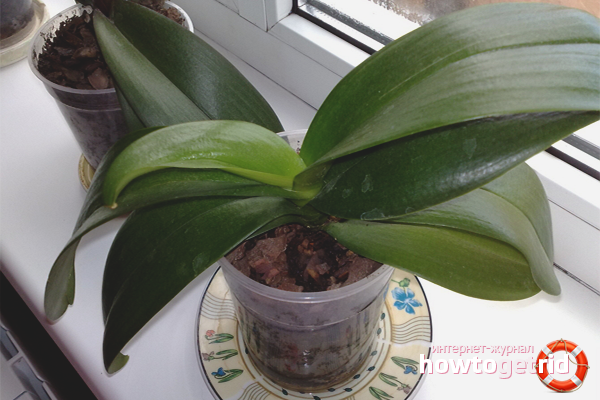
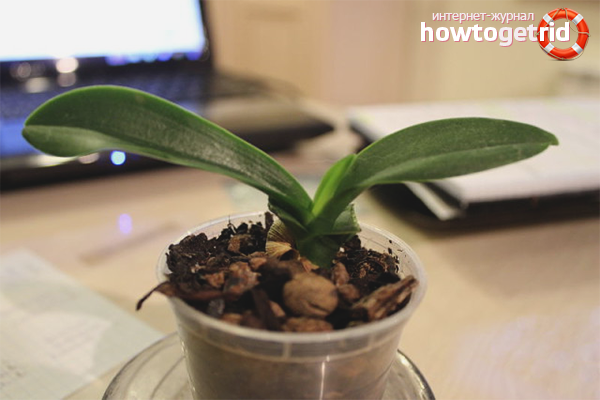

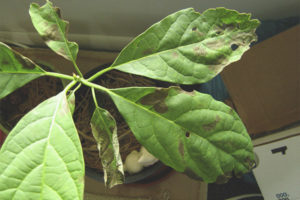
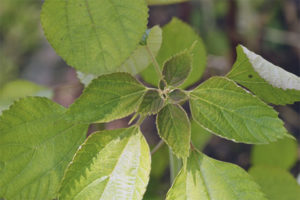

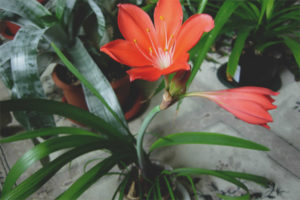

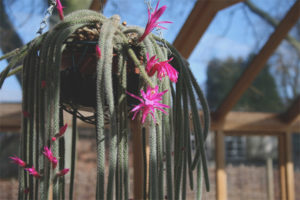
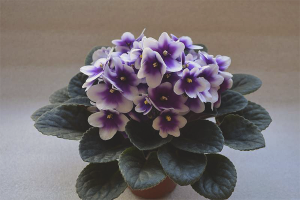
Submit